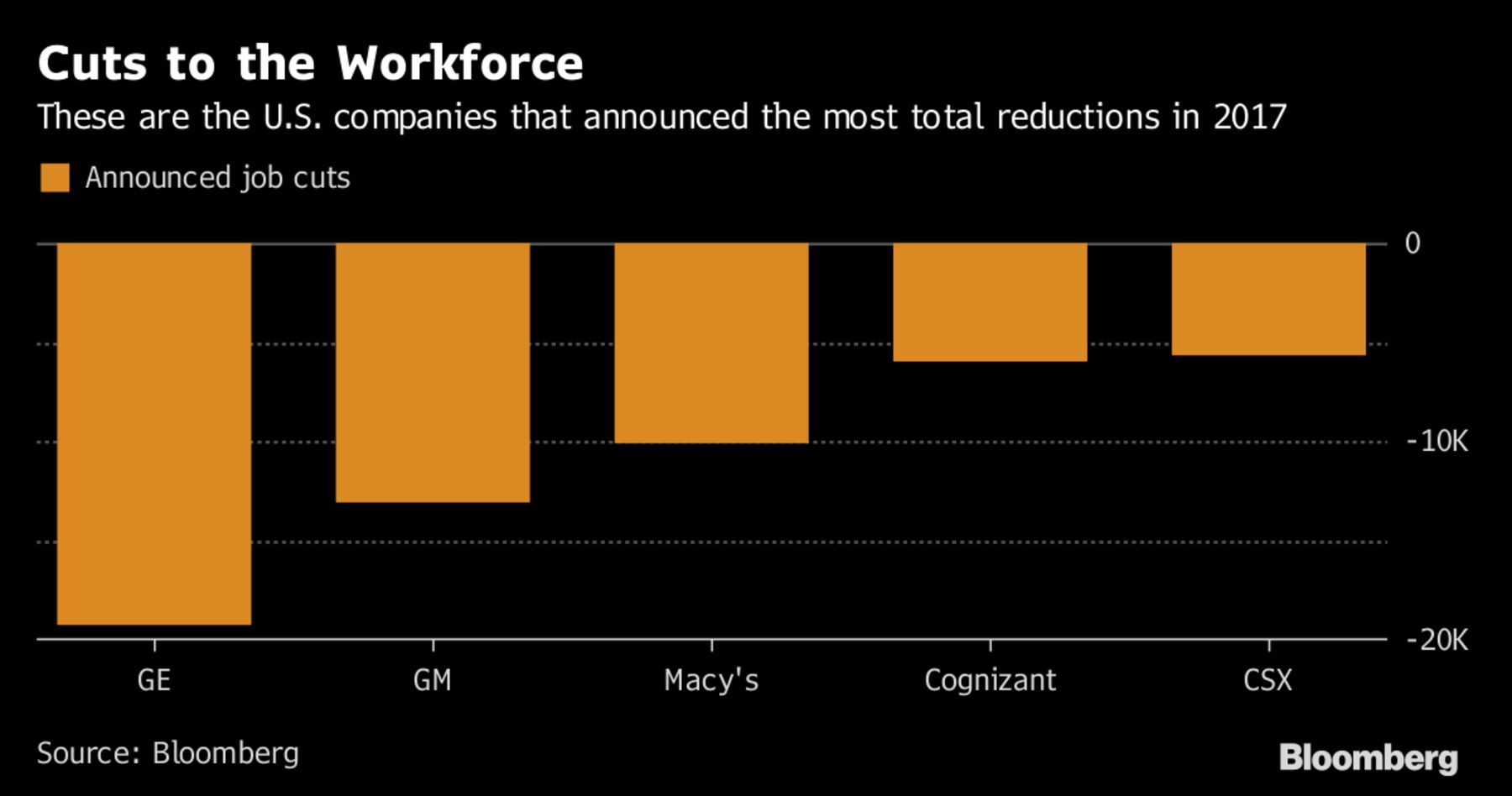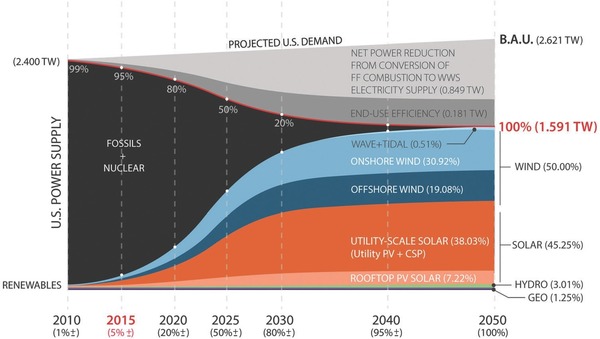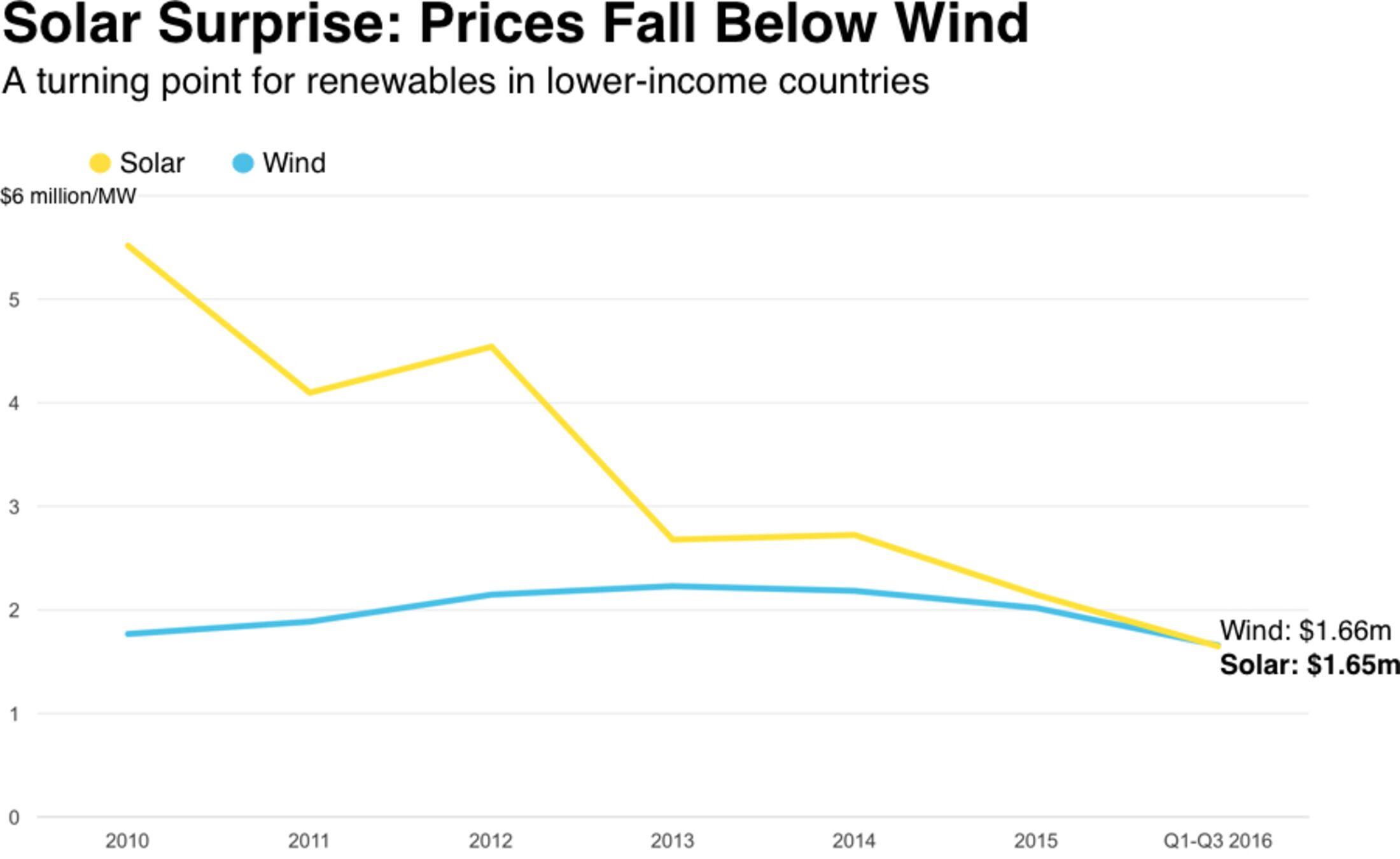The carbon bubble is bursting, as jobs fly from some of the biggest companies in the world, because solar and wind power are taking over right now. It’s too late to bet on the wrong nuclear horse or the wrong pipelnie snake. Get out of fossil fuels now: the sun is rising.
Tiffany Hsu and Clifford Krauss, New York Times, 7 December 2017, G.E. Cuts Jobs as It Navigates a Shifting Energy Market,
General Electric, whose new leadership is moving to eliminate bloat and grapple with the fallout from earlier, ill-timed decisions, is taking drastic steps to keep pace with seismic shifts in the global energy industry.

Brandon Kochkodin, Bloomberg, 7 December 2017, GE Ranks First in 2017 Downsizing After 12,000 More Job Cuts.The company said on Thursday that it would cut 12,000 jobs in its power division, reducing the size of the unit’s work force by 18 percent as part of a push to compete with international rivals in a saturated natural gas market, adjust to “softening” in the oil and gas sectors and stay abreast of the growing demand for renewable energy.
Solar and wind energy technology is increasingly being deployed around the world, in large part because of lower production costs. Renewable energy sources are expected to attract two-thirds of global investment in power plants until 2040 and account for as much as 40 percent of total power generation by then, according to the International Energy Agency.
Paul Mainwood, Flotsam, 30 January 2017, A modest proposal to the International Energy Authority,
The IEA’s projections for solar and wind power are notoriously way low. However, we could do their job for them, and look at the extent to which the IEA corrects these forecasts upwards each year. We see a a consistent pattern. Over the time of these reports, the renewable forecast for key years of 2010, 2015, 2020, 2025, 2030 and 2035 have been increased by an average of 9% every time a new report appears.
This astonishing consistency in under-calling allows us to construct a rule-of-thumb correction to the IEA’s figures. If we assume that they will be as inaccurate in the future as they have been in the past (a big assumption, true) then we can “correct” their projections for the next few years. Here’s what it looks like:
I grant that my “correction” shouldn’t be taken too seriously — and it certainly shouldn’t be projected out too far. But I look forward to scoring it against the IEA’s systematically undercalled projections. It certainly looks closer to the classic technology adoption S-curve that we typically see in industries where unit prices are coming down exponentially. And this exponential learning curve is precisely what we currently see in the Solar PV and wind sectors, and with storage technologies (20%+ learning curve rates at present).
This undercalling is familiar in legacy, dying industries: Kodak had similar curves drawn every year, marked “digital camera market share”. And every year, they looked at each other and moved the curve up a bit. Every year. Until film died.
And that’s what’s happening to fossil fuels. They’re being overtaken by solar and wind energy.
You know what else Mainfort’s green corrected curve looks like?
The yellow solar and orange wind exponential growth curves on my 2013 projection:
I did that by simply taking actual deployed capacity figures year over year as posted by the Federal Energy Regulatory Commission (FERC) and projecting them forward: 60.9% per year for solar, and 22.8% for wind. You can see in the graph that nothing else was growing remotely near that fast.
Shortly afterwards I discovered FERC’s Chair Jon Wellinghoff had made almost exactly the same prediction that within ten years more total electricity in the U.S. would come from solar power than from any other source, (Well, they trumped up an alleged conflict pretty quick after that that caused Wellinghoff to resign from FERC, but that’s another story.)
We were both too conservative. In 2016, new solar electricty was up 95%, more than gas or wind. Plus the solar industry employed 260,000 people, accounting for 2% of all new U.S. jobs in 2016. That’s more total electricty jobs than coal, oil, and natural gas combined, according to the U.S. Department of Energy.
So the projections by me and Wellinghoff are still on target for solar power to produce most U.S. electricty by 2023. Plus coal and nuclear are already dropping, and natural gas isn’t increasing even as fast as in my former projection.
And Stanford Professor Mark Z. Jacobson and his research team have taken such projections out to 2050, by which time all electricity and everything else (heating, cooling, transportation, etc.) can be powered by sun, wind, and water power and nothing else: no coal, no gas, no nuclear, no biomass.

End-Use U.S. Power Change over Time, in
100% clean and renewable wind, water, and sunlight (WWS) all-sector energy roadmaps for the 50 United States, by Mark Z. Jacobson et al., 27 May 2015
Just as Jacobson et al. projected, fossil fuel and nuclear power are already starting to shrink as solar and wind power relentlessly take over.
Already a year ago, Tom Randall, Bloomberg, 15 December 2016, World Energy Hits a Turning Point: Solar That’s Cheaper Than Wind: Emerging markets are leapfrogging the developed world thanks to cheap panels,

Disclosed capex for onshore wind and PV projects in 58 non-OECD countries Source: Bloomberg New Energy Finance
If solar prices beat wind, that means solar deployment will be driven even more faster than wind than it already was. What do you think that means for all other sources of power, which were already growing way slower than either?
It’s not just the IEA that still doesn’t get it. Later in the same New York Times story:
In much of the world, more coal is being burned and shipped this year compared with 2016. Still, long-term trends favor renewable sources and natural gas in developed and developing countries. Over time, natural gas will probably be pushed from a primary role to a supporting, balancing one as alternative energy rises in prominence.
China this year canceled 103 coal plants it ordered only a few years ago. The amount of new coal power being built fell by 2/3 in 2016 over the previous year.
Natural gas is not going to be balancing: it’s going to be wiped out by clean solar and wind power. coal, oil, and gas are the failed alternative fuels from the twentieth century. Clean 21st century renewable solar and wind power are taking over now.
The dinosaur energy companies of the last millennium are starting to wake up:
The shifting dynamics are roiling the huge conglomerates that serve the industry. Siemens, G.E.’s main rival, said last month that it was cutting 6,900 jobs worldwide in units focused on power plant technology, generators and large electrical motors. In making the announcement, Siemens said that “the power generation industry is experiencing disruption of unprecedented scope and speed.”
See that? “disruption of unprecedented scope and speed” Unprecedented unless you remember typewriters as personal computers took over, or Kodak as digital cameras took over, or AT&T Longlines as the Internet took over, or telephone booths as mobile phones took over, or flip phones as smart phones took over. Sure, exponential growth is not what we’re used to, because most things don’t grow like that: most things grow linearly, like those IEA projections. But some things do grow exponentially, and we’ve all lived through at least one of them; most of us have one of them in our pocket right now, or are reading this story on it.
Solar and wind power will win like the Internet did, eliminating all rivals, going from rare to everywhere in a decade, and then pervading everything in another decade.
The failure of fossil fuels is not just in the U.S. Most of Siemens job losses are in Germany and the rest of Europe.
That’s what happens when you bet on the wrong horse.
Yet FPL and Duke keep betting on that wrong black snake of a Sabal Trail fracked methane pipeline gouging through Alabama and north Florida to un-needed gas power plants and LNG export operations in south Florida. What profit will actually come from LNG export to Europe when solar and wind power are already taking over there, or to Asia when China is leading the world in solar power? Remember GE’s job cuts are largely because of trying to compete with “international rivals in a saturated natural gas market”. As in nobody needs any more natural gas.
Duke is smart enough that it has also started massive solar power deployment in the Sunshine State. Maybe Duke will be first to abandon Sabal Trail. There’s even some evidence that maybe it already has.
Tom Fanning, CEO of Southern Company, said Oh, solar panels? Oh, heck yeah! at the SO May 2017 Stockholder meeting, yet he continues SO’s Big Bet on the Plant Vogtle nuclear boondoggle, already gone bad by years and billions of dollars, while also buying up pipeline companies.
You’re all going to lose, fossil fuel gamblers. Get out now, while you stil can.
 Before the carbon bubble pops in the renewable energy sunrise.
Before the carbon bubble pops in the renewable energy sunrise.
-jsq
Investigative reporting costs money, for open records requests, copying, web hosting, gasoline, and cameras, and with sufficient funds we can pay students to do further research. You can donate to LAKE today!
Short Link:
